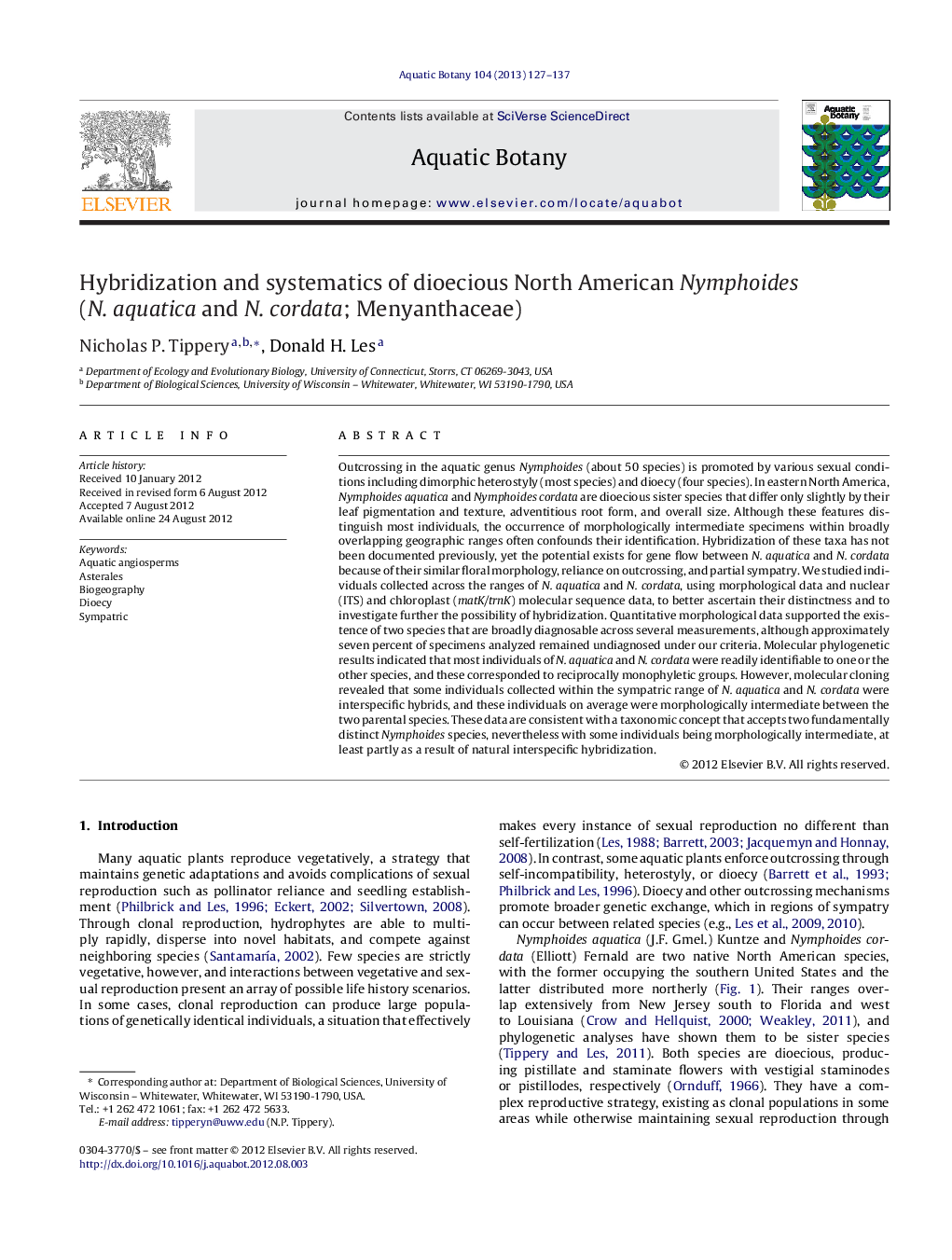| Article ID | Journal | Published Year | Pages | File Type |
|---|---|---|---|---|
| 4527975 | Aquatic Botany | 2013 | 11 Pages |
Outcrossing in the aquatic genus Nymphoides (about 50 species) is promoted by various sexual conditions including dimorphic heterostyly (most species) and dioecy (four species). In eastern North America, Nymphoides aquatica and Nymphoides cordata are dioecious sister species that differ only slightly by their leaf pigmentation and texture, adventitious root form, and overall size. Although these features distinguish most individuals, the occurrence of morphologically intermediate specimens within broadly overlapping geographic ranges often confounds their identification. Hybridization of these taxa has not been documented previously, yet the potential exists for gene flow between N. aquatica and N. cordata because of their similar floral morphology, reliance on outcrossing, and partial sympatry. We studied individuals collected across the ranges of N. aquatica and N. cordata, using morphological data and nuclear (ITS) and chloroplast (matK/trnK) molecular sequence data, to better ascertain their distinctness and to investigate further the possibility of hybridization. Quantitative morphological data supported the existence of two species that are broadly diagnosable across several measurements, although approximately seven percent of specimens analyzed remained undiagnosed under our criteria. Molecular phylogenetic results indicated that most individuals of N. aquatica and N. cordata were readily identifiable to one or the other species, and these corresponded to reciprocally monophyletic groups. However, molecular cloning revealed that some individuals collected within the sympatric range of N. aquatica and N. cordata were interspecific hybrids, and these individuals on average were morphologically intermediate between the two parental species. These data are consistent with a taxonomic concept that accepts two fundamentally distinct Nymphoides species, nevertheless with some individuals being morphologically intermediate, at least partly as a result of natural interspecific hybridization.
Graphical abstractFigure optionsDownload full-size imageDownload as PowerPoint slideHighlights► We studied morphological and molecular data for Nymphoides native to North America. ► Most quantitative morphological characters overlapped somewhat between species. ► The species generally are distinct but have produced hybrids in sympatry. ► We provide new morphological criteria for distinguishing Nymphoides aquatica and Nymphoides cordata.
